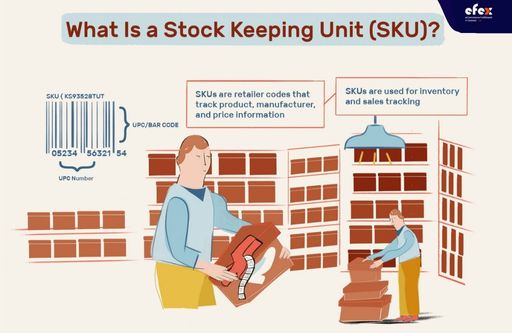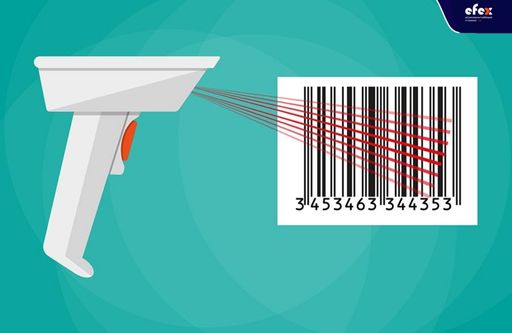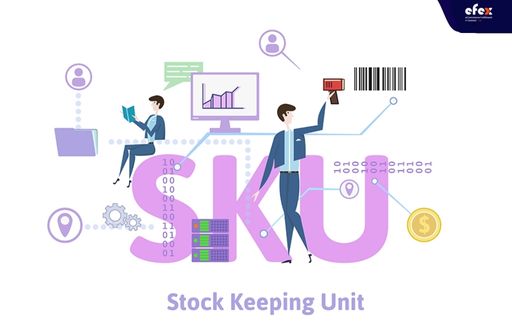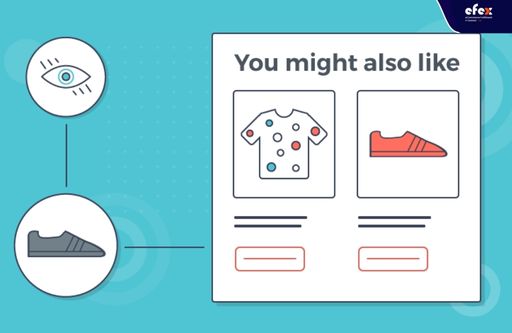
More Helpful Content
Stock Keeping Units (SKUs) are currently being appreciated for increasing the sales efficiency of businesses. The advantages, as well as the advantages that it brings to your business, are significant in warehouse management. But in order to apply SKU properly, you must have knowledge of SKU number meaning or SKU number examples in business operations. And that knowledge will be discussed below!

A Stock Keeping Units (SKU) is defined as a scannable number used by retailers to classify products and manage inventory levels. In addition, vendors can also track product movement through the SKU. In terms of size, a SKU is a character combination of letters and numbers, typically 8 or more characters. Characters in a SKU will vary depending on manufacturer, price, size, color, style, etc.
Not only for physical products but also SKU codes can be used with intangible but affordable products such as the value of the cooking time in a restaurant. The characteristic of the SKU is that it is unique, no two SKU codes are the same and they can be adjusted and changed based on the needs of the owners.
👉 Read More: What Is Stockout Cost? Formula And Example
👉 Read More: What Is A Stockout: Rate, Formula, And Risk
The SKU number is made up of 3 separate parts. The top-level identifier, Middle-level identifier, and Final identifiers.
SKU was created with the purpose of making product classification easier. You also know that it is impossible to classify items that differ in style, type, color, or size without naming them. To understand how SKU codes work.
Let's take a look at the following example: A shoe supplier uses the SKU code in their inventory process.
For Adidas shoes, they will attach the letter A to them.
As for Nike shoes, the first letter in the SKU code will be N. The next letters will be named based on outstanding features of the shoe line such as material, size, color, etc. The red Adidas shoes will be AR, and the blue Nike shoes will be NB. Just like that, we get a series of SKU codes in order.

| Category | Code | Item Color | Code | Item Size | Code | SKU |
| Jacket | A1 | Red | B1 | L | 011 | A1B1011 |
| Jacket | A1 | Blue | B2 | S | 012 | A1B2012 |
| Jacket | A1 | Black | B3 | XL | 013 | A1B3013 |
| Pant | D1 | Red | C1 | L | 014 | D1C1014 |
| Pant | D1 | Blue | C2 | S | 015 | D1C2015 |
| Pant | D1 | Black | C3 | XL | 016 | D1C3016 |
With the potential for inventory management, SKU barcodes will help you in many areas, not just commodity classification. The side effects can be listed as:

Collecting product data such as buying volume and which items are selling well will be supported by SKU. From there, you will have a lot of important information to analyze and guide the market demand. This is very useful when you can anticipate current customer needs and from there import items that get a lot of demand to optimize profits.
👉 Read More: What is return merchandise authorization (RMA) And Process
One of the biggest benefits SKUs bring to their users is that they help with inventory management. With SKU barcodes, you can keep track of sales, availability, and the flow of supply and demand in the marketplace. Knowing that information, you will have a clearer view of the current state of the warehouse, easier to find out what problems are affecting the workflow, and have a solution.
In selling, quickness and convenience will contribute to customer satisfaction with service quality. When a store employee needs to search for the requested goods, they simply scan the SKU code on the system to see if the product is still in stock. This method brings high efficiency in sales, avoiding delays in customer feedback.
On the advertising side, applying SKU codes in a marketing campaign will make it easier for customers to access the products your business is selling. Especially in the era of fierce competition in e-commerce, adopting new technologies like SKU will help your inventory reach more customers and you too. Getting a detailed report on which marketing techniques also help you to make the most money.
Customers who contact the SKU application marketing program will be able to get specific reviews on the items they are in need of shopping. From there, they do not have to go to the physical store to check the goods, making the sale more convenient.

To broaden their markets, companies also consider adopting SKUs a good idea to enhance their encounter history with consumers. For example, when you use SKUs at Amazon, customers will be offered "recommended" items with the same characteristics as those they have explored before. The convenience here is that you only need to attach a single SKU to products you offer that share the same features.
- Read More: Order Management System: Definition, Process And Value
- Read More: Order management system for Ecommerce: Definition, Key Effect, Benefit
It can be said that ll knowledge related to SKU numbers is important because it helps you to know if this is a good way to fit into your current inventory management system and how to use it effectively. In conclusion, SKUs are most likely to be needed if you want to have a well-organized inventory of goods, thereby improving the quality of employees' work and increasing sales. You've found this article so helpful? Let's follow our Fanpage and Efex to get many interesting articles!


